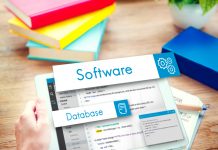Introduction
Organizations can’t make educated decisions or comply with regulations in today’s fast-paced business world without reliable and timely financial reporting. Financial reports have improved in efficiency, accuracy, and dependability with the introduction of accounting software. This article delves at how accounting software aids in financial reporting, what features are crucial, which programmers are the most popular, and best practices for putting them all to use.
The Role of Accounting Software in Financial Reporting
A. Streamlining financial data collection and organization
By automating data entry and integrating with external sources like bank accounts and company systems, accounting software streamlines the collection of financial data. It guarantees accuracy and consistency by doing away with the need for human intervention. In addition, it stores all your financial information in one place where it can be quickly accessed and searched.
B. Generating accurate financial statements
The process of compiling financial statements is often tedious and involved. Accurate and consistent financial reporting is made possible by accounting software’s automated processes. It brings together information from several sources, produces financial documents including balance sheets, income statements, and cash flow statements, and updates these documents in real time as transactions occur.
C. Facilitating compliance with accounting standards and regulations
Businesses must ensure they are transparent by following applicable laws and accounting norms. General Accepted Accounting Principles (GAAP) and International Financial Reporting Standards (IFRS) compliance functions are integral parts of modern accounting software. As a result, the possibility of errors and fines associated with filing financial reports is diminished.
Benefits of Using Accounting Software for Financial Reporting
A. Time and cost savings
Accounting software helps businesses save time and money by automating routine activities and decreasing the need for manual data entry. Reconciliations take less time and are less likely to result in mistakes when paper-based methods are replaced. The money and time freed up in this way can be put to better use elsewhere in the company to boost productivity overall.
B. Increased precision and dependability of economic statistics
Manual data entry, incorrect calculations, and inconsistent records are all things that can be easily avoided using accounting software. It guarantees correct and up-to-date financial information, which is the foundation for trustworthy financial reporting. Errors can be caught and fixed before reports are finalized thanks to the software’s built-in error-checking algorithms.
C. Enhanced financial analysis and decision-making
The robust analytical software tools built into accounting software let organizations draw meaningful conclusions from their financial data. It can be used to create individualized reports, charts, and graphs to better illustrate business results. These resources help businesses spot patterns, examine vital metrics, and make educated choices that boost efficiency and revenue.
Features to Look for in Accounting Software for Financial Reporting
When choosing accounting software for financial reporting, consider the following essential features:
• General ledger management:
Transactions, journal entries, and account reconciliations can all be handled by the software if it has strong general ledger features.
• Automation and integration:
To simplify financial data collecting, you should use software that both automates data entry and interfaces with your bank accounts and payment gateways.
• Reporting and analytics:
Financial statements, key performance indicators, and visualizations for in-depth analysis are only some of the report types that should be available in the software.
• Compliance support:
Verify if your industry’s specific accounting standards and regulations are supported by the program.
• Scalability and flexibility:
Select a program with flexible configuration choices that may be adapted to your specific reporting needs as your organization develops.
Popular Accounting Software for Financial Reporting
Several accounting software options cater to businesses of all sizes. Some popular choices include:
• QuickBooks:
Popular accounting program praised for its intuitive design and abundance of tools for analyzing financial data. It comes in several different flavors that are ideally suited to different business sizes. Automatic transaction management, individualized reports, and compatibility with other applications are just some of the benefits of using QuickBooks.
• Xero:
An online bookkeeping service with real-time financial reporting and teamwork tools. Xero’s inventory management features are some of the best in the business. It’s a versatile option for organizations because it works with a large variety of third-party apps.
• Sage Intacct:
Sage Intacct is a financial reporting system developed for businesses of a moderate to big size. It has powerful analytics, a tunable dashboard, and multidimensional reporting. In addition to being easily connected with other corporate systems, Sage Intacct provides industry-specific solutions.
• NetSuite:
An all-inclusive cloud-based ERP with robust financial reporting features. In addition to extensive budgeting and forecasting tools, NetSuite also provides real-time financial dashboards. It’s a one-stop shop for handling all your business’s financials, stock, and clientele.
• Zoho Books:
Simple accounting software that can handle the needs of a small business. Automatic bank feeds, editable invoices, and pre-made templates for financial reports are just some of the perks of using Zoho Books. It has possibilities for teamwork and a client portal and is compatible with other Zoho programs.
Best Practices for Implementing and Utilizing Accounting Software
To maximize the benefits of accounting software for financial reporting, consider the following best practices:
• Define reporting requirements:
Determine the critical financial KPIs and reports your company requires. This will guide your choice of a reporting tool and help you verify that the tool’s features fit your requirements.
• Plan for data migration:
It’s important to take your time when migrating data from a manual system or from one piece of software to another. For continuity’s sake, double check that all of your old financial records were successfully imported into the new system.
• Customize and configure the software:
Make sure the program is configured to fit your organization’s needs, down to the chart of accounts and the reports you want to see. This will make it easier to enter data and create reports that meet your requirements.
• Provide training and support:
Spend money on training sessions to make sure your staff can make good use of the program. Make yourself available as a continuous resource for queries and issues that may crop up throughout implementation and regular use.
• Regularly update and reconcile data:
Keep your financial records up to date by balancing your accounts and resolving any inconsistencies as soon as possible. In this way, you may rest assured that your financial records are accurate and trustworthy.
Case Studies: Success Stories of Businesses Using Accounting Software for Financial Reporting
To illustrate the impact of accounting software on financial reporting, let’s explore a couple of success stories:
The financial reporting demands of Company X, a medium-sized manufacturing concern, were met through the implementation of QuickBooks. They were able to cut down on human labor by half by using tools like automated data input and in-depth reporting capabilities. This streamlined process freed up the finance department to focus on strategic analysis, which ultimately led to better decisions and more profits.
In order to streamline their financial reporting and meet certain reporting criteria for grant financing, Organization Y, a nonprofit corporation, chose Sage Intacct. They were able to keep tabs on costs across projects and create comprehensive reports for donors because of the software’s robust reporting features. As a result, they were able to increase openness, fulfil regulatory requirements, and open up new avenues for funding.
Conclusion
By automating data gathering, producing reliable statements, and making compliance easier, accounting software has fundamentally changed the landscape of financial reporting. Using accounting software can help you save money and time, increase accuracy, and provide deeper insight into your finances. General ledger management, automation, and reporting are all important functions to look for in accounting software.






